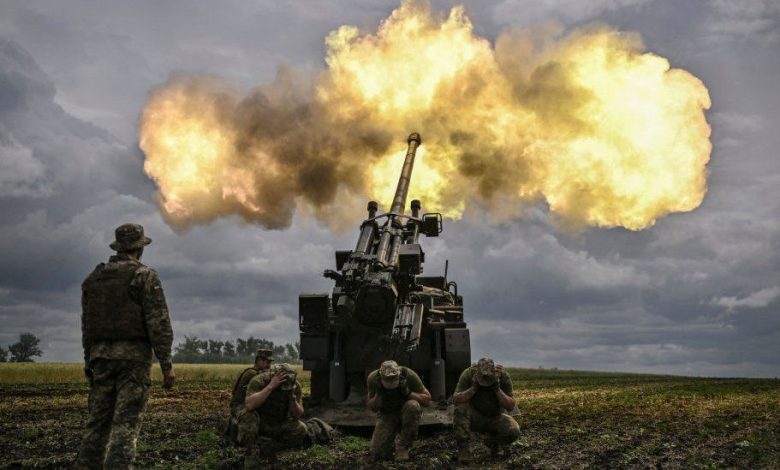Analysis: The illusion of the multipolar world

The illusion of multipolarity derives from American strategic choices, not the system itself, the international system remains unipolar
Immediately after the end of the Cold War, the debate on unipolarity became popular in Western academia and policy circles. Unipolarity refers to the material superiority of a single superpower, measured by indicators like military might, economic resources, and technological capabilities. The debate had its apex during the 1990s. Some discussed the stability of unipolarity [1], while others focused on the durability [2] of such an international system.
Since the United States (US) emerged as the sole superpower after the collapse of the Soviet Union, its strategic behavior was the key to making sense of unipolar politics. The world was initially optimistic about the prospects of peace as the Berlin Wall and the Soviets were falling. Then came the Gulf War in 1991. And Bill Clinton’s liberal internationalism was followed by Bush’s interventionism in Iraq and Afghanistan. The US pursued a grand strategy of primacy [3]. It was making the world over in its own image by engaging in regime change, nation-building, and promoting democracy, using either military force or international institutions [4].
However, in recent years, the observation that the international system is no longer unipolar has been frequently voiced in both Western and non-Western academic circles. Proponents of this view argue that the world has evolved into a multipolar order [5] where other major powers, notably Russia and China, have become more influential in international politics. Russia’s annexation of Crimea in 2014 and China’s growing influence in the Asia Pacific constitute a basis for the multipolar world saga.
While it is simply a matter of measuring [6] the global distribution of material power, the concept of polarity has been used loosely and ambiguously. Polarity is largely based on the materialist conception of power [7], supported by auxiliary elements like culture, values, and diplomacy. Considering the relative material capabilities of all major powers [8], the US remains the only global power [9] with a self-sufficient military, solid economy, and technological edge. Proponents of multipolarity misread the systemic consequences of American strategic behavior. They focus on the outcomes of the political relationships that the US prefers to maintain with the rest of the world, rather than its structural power position.
The false promise of American retrenchment
Beginning from Obama’s second term, the US has gradually retreated from the role of global leadership. It is not a strategy of isolationism in its strict sense, but a strategy of retrenchment [10]. It suggests that the US should not be “the world’s policeman”. A fragile internal consensus on foreign policy has led the US to be a cautious hegemon. The American public has become more reluctant to expend American blood and treasure on distant regions. Many in the US foreign policy and national security establishment have believed that the US should end “endless wars” [11] and exert a strategy of restraint [12]. Such domestic political factors lead American presidents to rethink the cost of maintaining the strategy of primacy.
The strategy of retrenchment, however, created power vacuums across regions. Major powers like Russia and China have tried to fill the geopolitical voids since the US scaled back its commitments across regions. The US also asked its allies to assume more responsibility for dealing with their security problems. Greater responsibility comes with a greater economic and political burden. Most US allies were not prepared to go it alone. The EU states had to review their national security stance, sparking debates centered on strategic autonomy [13] and a European army [14]. Russia and China have adopted emboldened and assertive foreign policy stances. The US pullback from global leadership has thus caused a false perception of multipolarity.
Russia and China, however, don’t seem to stand as peer competitors vis-à-vis the United States. The Russian military has often been touted as the second-largest military power. While Russia maintains a considerable nuclear arsenal, the blunder in Ukraine has put its conventional forces into question. China, on the other hand, continues to grow economically. Even if China’s GDP surpasses US GDP, China still has much to do to catch [15] the US. The widespread belief that economic growth will effectively translate into military power is misleading. Extracting military power from available resources requires a state to have strong and competent institutions. Also, China’s power projection capacity is still limited for a potential global military power. The Chinese military has yet to develop a military doctrine [16] that protects China’s global interests.
Multipolarity, but when and how?
As China builds up its military, its expanding nuclear arsenal is expected to lead the world into “a nuclear multipolarity.” The most recent US National Security Strategy [17] points out that this is the most serious threat that the United States will face by the 2030s. Only under this condition, the US will have to deter two nuclear major powers at the same time. This will be an unprecedented strategic balance that even goes beyond the Cold War.
Is the US back in town?
Having coped with the pandemic during his first year in office, the Biden administration has increasingly become more engaged in world affairs. Biden’s “America is back” discourse signaled a U-turn in American national security posture. No doubt, the US military aid worth more than 18 billion dollars to Ukraine [18] marks this turn.
Moreover, Nancy Pelosi’s visit to Taiwan in August 2022 reaffirmed, albeit unofficially, the US policy of strategic ambiguity. Recent ambitious expert control regulation of the Biden administration aimed at China’s semiconductor industry seems to be the beginning of a more aggressive economic competition, if not a decisive blow to the Chinese economy for now. Furthermore, the killing of Al-Qaeda leader Zawahiri is another signal that the US is still committed to taking down the threat coming from non-state actors.
In conclusion, the illusion of multipolarity derives from American strategic choices, not the system (i.e., distribution of power) itself. The international system remains unipolar. Unipolarity does not mean that the United States rules the world. It, however, means that no other major power matches the US in terms of material capabilities. The United States has willingly retreated from playing the world’s policeman in recent years, giving rise to the illusion of multipolarity.
[1] https://www.belfercenter.org/publication/stability-unipolar-world [2] https://direct.mit.edu/isec/article-abstract/17/4/5/11427/The-Unipolar-Illusion-Why-New-Great-Powers-Will?redirectedFrom=fulltext [3] https://direct.mit.edu/isec/article-abstract/21/3/5/11549/Competing-Visions-for-U-S-Grand-Strategy?redirectedFrom=fulltext [4] https://www.jstor.org/stable/42897726 [5] https://www.foreignaffairs.com/articles/world/2021-03-23/new-concert-powers [6] https://direct.mit.edu/isec/article/43/2/7/12211/The-Power-of-Nations-Measuring-What-Matters [7] https://www.jstor.org/stable/40060219 [8] https://direct.mit.edu/isec/article/40/3/7/12119/The-Rise-and-Fall-of-the-Great-Powers-in-the [9] https://www.jstor.org/stable/10.7591/j.ctvrf8cq4 [10] https://global.oup.com/academic/product/the-obama-doctrine-9780190659943?cc=tr&lang=en& [11] https://www.foreignaffairs.com/articles/united-states/2016-08-03/ending-endless-war [12] https://www.jstor.org/stable/10.7591/j.ctt5hh0db?turn_away=true [13] https://www.foreignaffairs.com/france/letting-europe-go-its-own-way [14] https://ecfr.eu/article/commentary_the_european_army_a_tale_of_wilful_misunderstanding/ [15] https://direct.mit.edu/isec/article/43/3/141/12218/Why-China-Has-Not-Caught-Up-Yet-Military [16] https://setav.org/en/assets/uploads/2020/02/A56En.pdf [17] https://www.whitehouse.gov/wp-content/uploads/2022/10/Biden-Harris-Administrations-National-Security-Strategy-10.2022.pdf [18] https://www.washingtonpost.com/politics/officials-us-sending-ukraine-400-million-in-military-aid/2022/11/10/cea685c2-6115-11ed-a131-e900e4a6336b_story.html*Opinions expressed in this article are the author’s own and do not necessarily reflect the editorial policy of Anadolu Agency.





